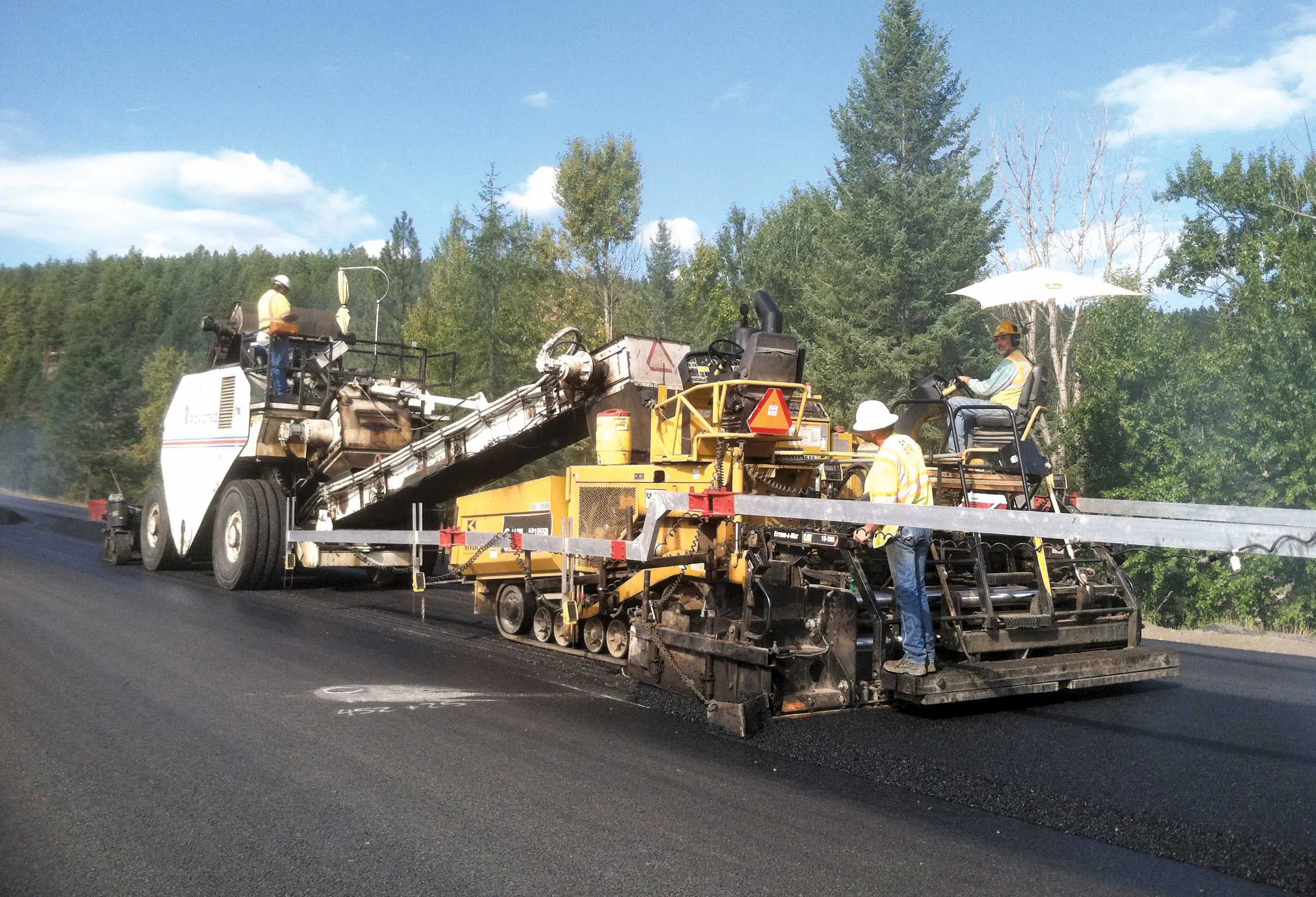Auckland’s Western Ring Route project update - Mary Bell writes. A number of integrated projects in Auckland, New Zealand, will improve the lot of road users and cyclists, and significantly alter the topography of the city’s motorway.
On September 29th the tunnel boring machine digging the first of twin road tunnels beneath the city broke into daylight after 10 months underground.
The new 2.4km-long Waterview tunnels will connect the city’s Northwestern and Southwestern motorways, each carrying three lane
October 8, 2014
Read time: 4 mins

Auckland’s Western Ring Route project update - Mary Bell writes
A number of integrated projects in Auckland, New Zealand, will improve the lot of road users and cyclists, and significantly alter the topography of the city’s motorway.
On September 29th the tunnel boring machine digging the first of twin road tunnels beneath the city broke into daylight after 10 months underground.
The new 2.4km-long Waterview tunnels will connect the city’s Northwestern and Southwestern motorways, each carrying three lanes of traffic up to 40m below the suburbs of Waterview and Owairaka. The tunnels will be the longest road tunnels in the New Zealand.
Doing the hard work is Alice, a 90m-long, 3100tonne tunnel borer. So far it has excavated 400,000m3 of spoil, and 12,070 concrete tunnel lining segments have been placed in her wake.
The2574 NZ Transport Agency’s highways manager for Auckland and Northland, Brett Gliddon, says the southbound tunnel’s completion is a significant milestone in the project. The next five months will be taken up with turning Alice around so she can dig the northbound tunnel.
“While it is not unusual to turn a tunnel boring machine, what is extraordinary about this turn is the sheer size of the machine and constricted space in which the manoeuvre will take place,” says Mr Gliddon.
Well-Connected Alliance project manager John Burden says the break through, turnaround and restart of the tunnel borer are particularly challenging.
A large, steel restraining frame was installed to prevent the face of the tunnel from collapsing as Alice broke through. This will be removed and a concrete receiving cradle installed under the borer. Alice will then be disconnected into four parts – the cutting head and three trailing gantries – and each piece pushed from the completed tunnel, one at a time, onto a steel cradle, dragged sideways and turned 180° using large pulling jacks and lots of grease – 200litres of lanolin from New Zealand sheep, to be precise.
In December, Alice will be set up into launch position at the headwall and the first of her gantries reconnected along with a smaller and lighter temporary second gantry, as there will not be enough room for the other gantries. The main drive will begin in March next year. Once she has bored 300m of the second tunnel the temporary gantry will be removed and the second and third gantries will be reattached.
A fourth gantry, which operates independently of Alice to install a culvert on the floor of the tunnel that will carry services needed for its operation, will also need to be turned before it can resume work.
The Waterview Connection project also includes building surface connections to the existing motorways, 9km of new cycleway, and new community amenities such as playgrounds and walkways.
The tunnel is a key feature of five interconnected projects currently underway to the west of the city to complete the Western Ring Route, a 47km-long motorway alternative to State Highway 1 that runs through the heart of Auckland’s congested central city. These, along with a sixth, already-completed interchange upgrade project, have a total price tag of NZ$1.4 billion (US$1.09 billion).
Rubbing shoulders with the Waterview Connection is the 4.8km-long, Causeway Upgrade project. Although not as spectacular as the tunnel, this project is vital to the improvement of the motorway network. It sees more than 90,000 vehicles/day, along with many users of the cycleway alongside the motorway.
The causeway has been prone to flooding and debris during extremely high tides and adverse weather, and is subject to traffic congestion during peak hours. The upgrade will raise it by 1.5m for half its length and widen the existing dual three-lane motorway to five lanes westbound and four lanes city-bound, plus bus shoulder lanes and an improved cycleway.
In many ways this project is fairly straightforward, however, the road passes through a marine reserve so requires particular environmental consideration. The construction site is also a narrow corridor adjacent to high-speed motorists, increasing the safety risks for workers on site.
Another three adjacent projects, the Great North Road to St Lukes interchange, the Te Atatu Road interchange and the Lincoln Road interchange, are also underway.
As the projects are all linked but being undertaken by three different teams, one of the biggest challenges is ensuring excellent communication between the project teams.
“It’s an integrated programme with lots of traffic shifts. We’ve got quite a lot of people working on the detail,” says Causeway Alliance project manager Mark Evans. “We have management, operational and governance meetings frequently to ensure we know who can do what and when.
“A lot of planning has gone in to get this right.”
A number of integrated projects in Auckland, New Zealand, will improve the lot of road users and cyclists, and significantly alter the topography of the city’s motorway.
On September 29th the tunnel boring machine digging the first of twin road tunnels beneath the city broke into daylight after 10 months underground.
The new 2.4km-long Waterview tunnels will connect the city’s Northwestern and Southwestern motorways, each carrying three lanes of traffic up to 40m below the suburbs of Waterview and Owairaka. The tunnels will be the longest road tunnels in the New Zealand.
Doing the hard work is Alice, a 90m-long, 3100tonne tunnel borer. So far it has excavated 400,000m3 of spoil, and 12,070 concrete tunnel lining segments have been placed in her wake.
The
“While it is not unusual to turn a tunnel boring machine, what is extraordinary about this turn is the sheer size of the machine and constricted space in which the manoeuvre will take place,” says Mr Gliddon.
Well-Connected Alliance project manager John Burden says the break through, turnaround and restart of the tunnel borer are particularly challenging.
A large, steel restraining frame was installed to prevent the face of the tunnel from collapsing as Alice broke through. This will be removed and a concrete receiving cradle installed under the borer. Alice will then be disconnected into four parts – the cutting head and three trailing gantries – and each piece pushed from the completed tunnel, one at a time, onto a steel cradle, dragged sideways and turned 180° using large pulling jacks and lots of grease – 200litres of lanolin from New Zealand sheep, to be precise.
In December, Alice will be set up into launch position at the headwall and the first of her gantries reconnected along with a smaller and lighter temporary second gantry, as there will not be enough room for the other gantries. The main drive will begin in March next year. Once she has bored 300m of the second tunnel the temporary gantry will be removed and the second and third gantries will be reattached.
A fourth gantry, which operates independently of Alice to install a culvert on the floor of the tunnel that will carry services needed for its operation, will also need to be turned before it can resume work.
The Waterview Connection project also includes building surface connections to the existing motorways, 9km of new cycleway, and new community amenities such as playgrounds and walkways.
The tunnel is a key feature of five interconnected projects currently underway to the west of the city to complete the Western Ring Route, a 47km-long motorway alternative to State Highway 1 that runs through the heart of Auckland’s congested central city. These, along with a sixth, already-completed interchange upgrade project, have a total price tag of NZ$1.4 billion (US$1.09 billion).
Rubbing shoulders with the Waterview Connection is the 4.8km-long, Causeway Upgrade project. Although not as spectacular as the tunnel, this project is vital to the improvement of the motorway network. It sees more than 90,000 vehicles/day, along with many users of the cycleway alongside the motorway.
The causeway has been prone to flooding and debris during extremely high tides and adverse weather, and is subject to traffic congestion during peak hours. The upgrade will raise it by 1.5m for half its length and widen the existing dual three-lane motorway to five lanes westbound and four lanes city-bound, plus bus shoulder lanes and an improved cycleway.
In many ways this project is fairly straightforward, however, the road passes through a marine reserve so requires particular environmental consideration. The construction site is also a narrow corridor adjacent to high-speed motorists, increasing the safety risks for workers on site.
Another three adjacent projects, the Great North Road to St Lukes interchange, the Te Atatu Road interchange and the Lincoln Road interchange, are also underway.
As the projects are all linked but being undertaken by three different teams, one of the biggest challenges is ensuring excellent communication between the project teams.
“It’s an integrated programme with lots of traffic shifts. We’ve got quite a lot of people working on the detail,” says Causeway Alliance project manager Mark Evans. “We have management, operational and governance meetings frequently to ensure we know who can do what and when.
“A lot of planning has gone in to get this right.”







